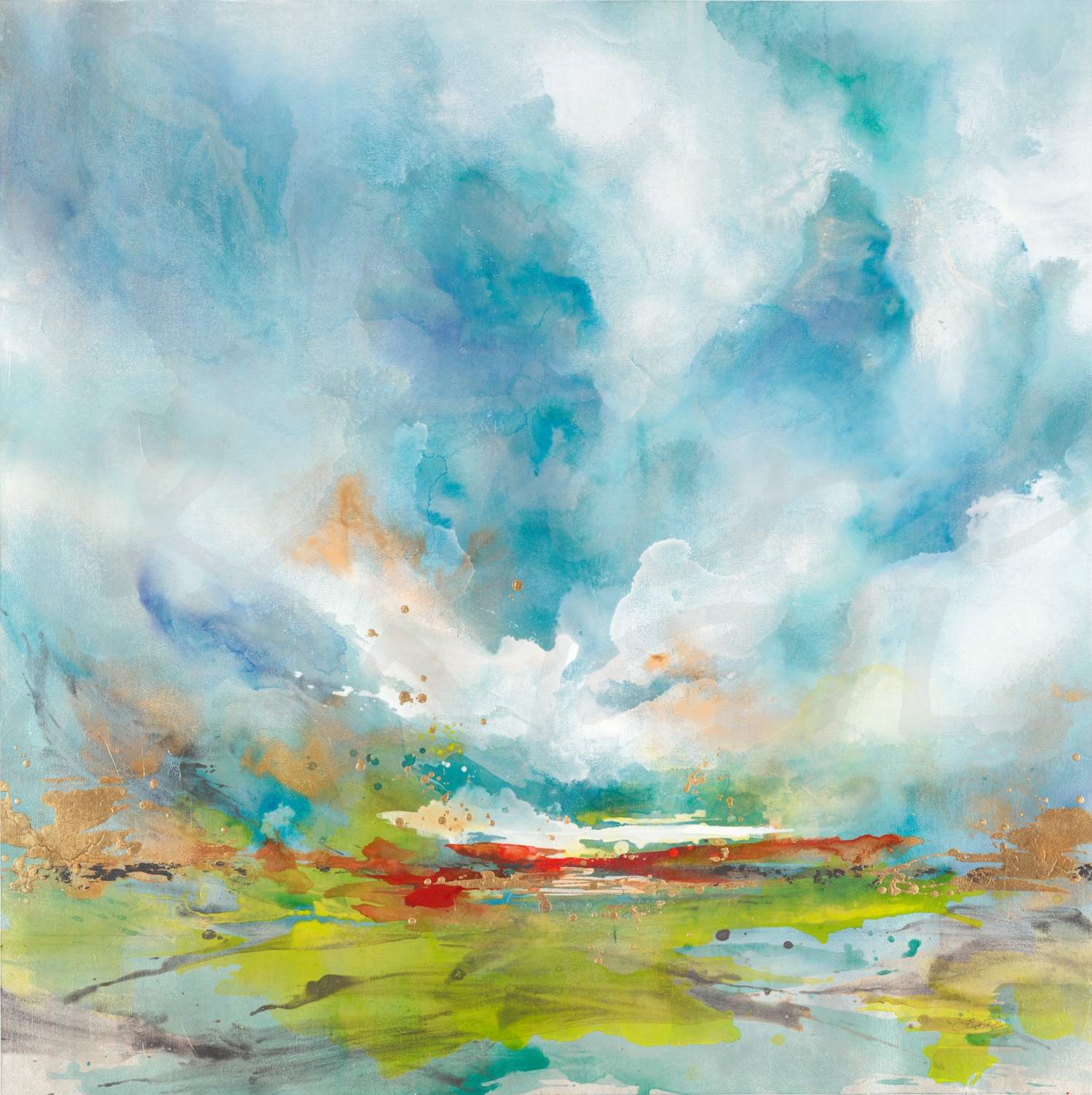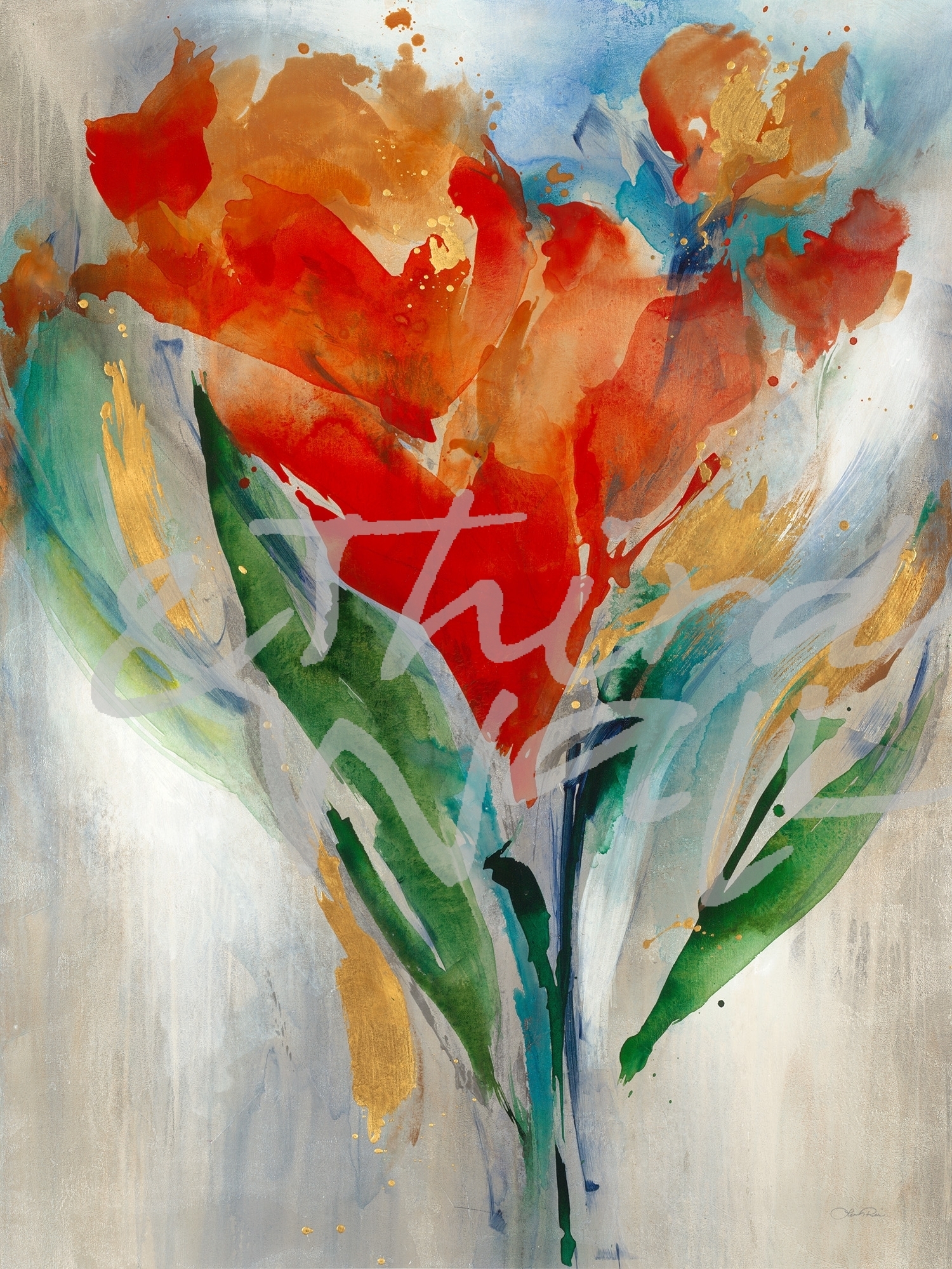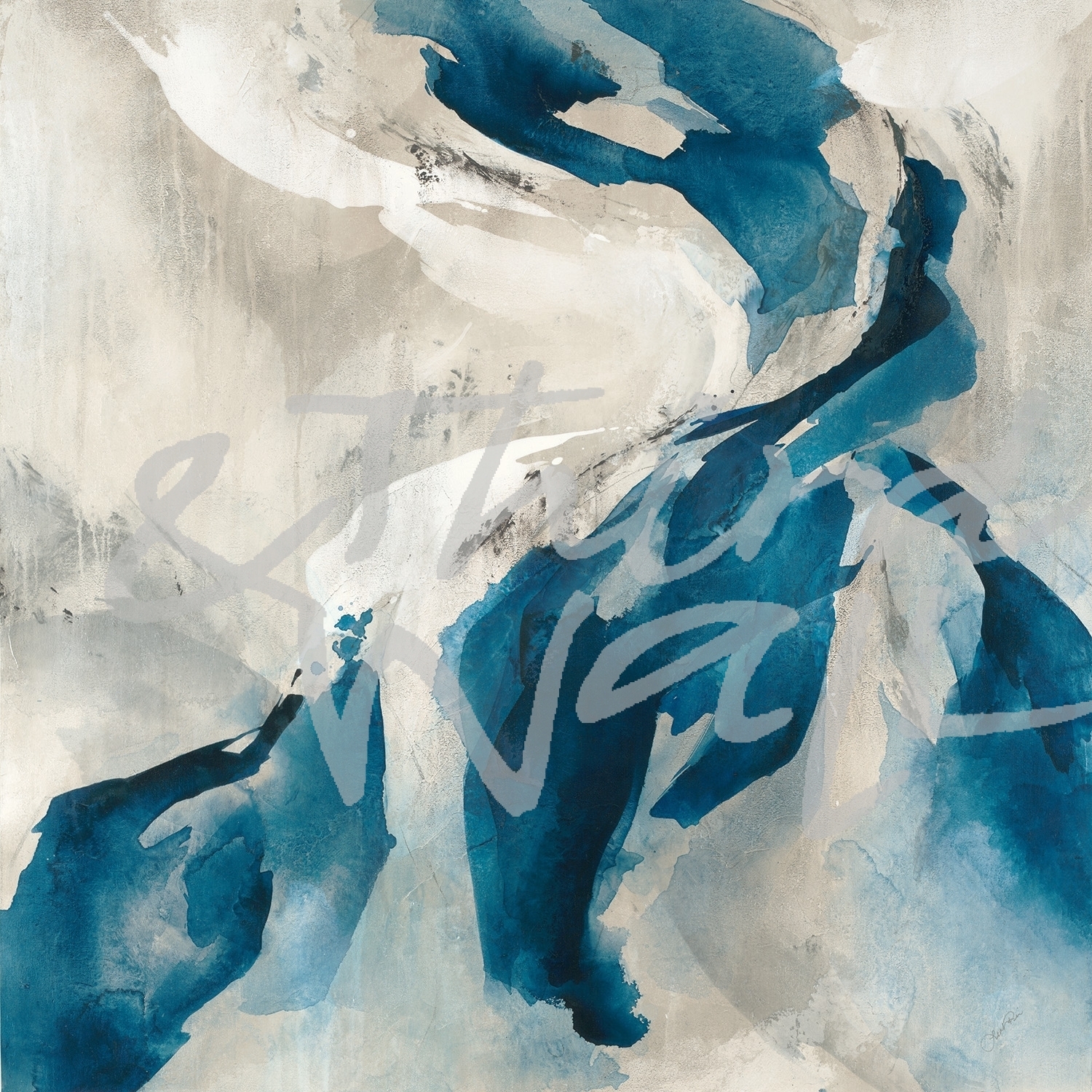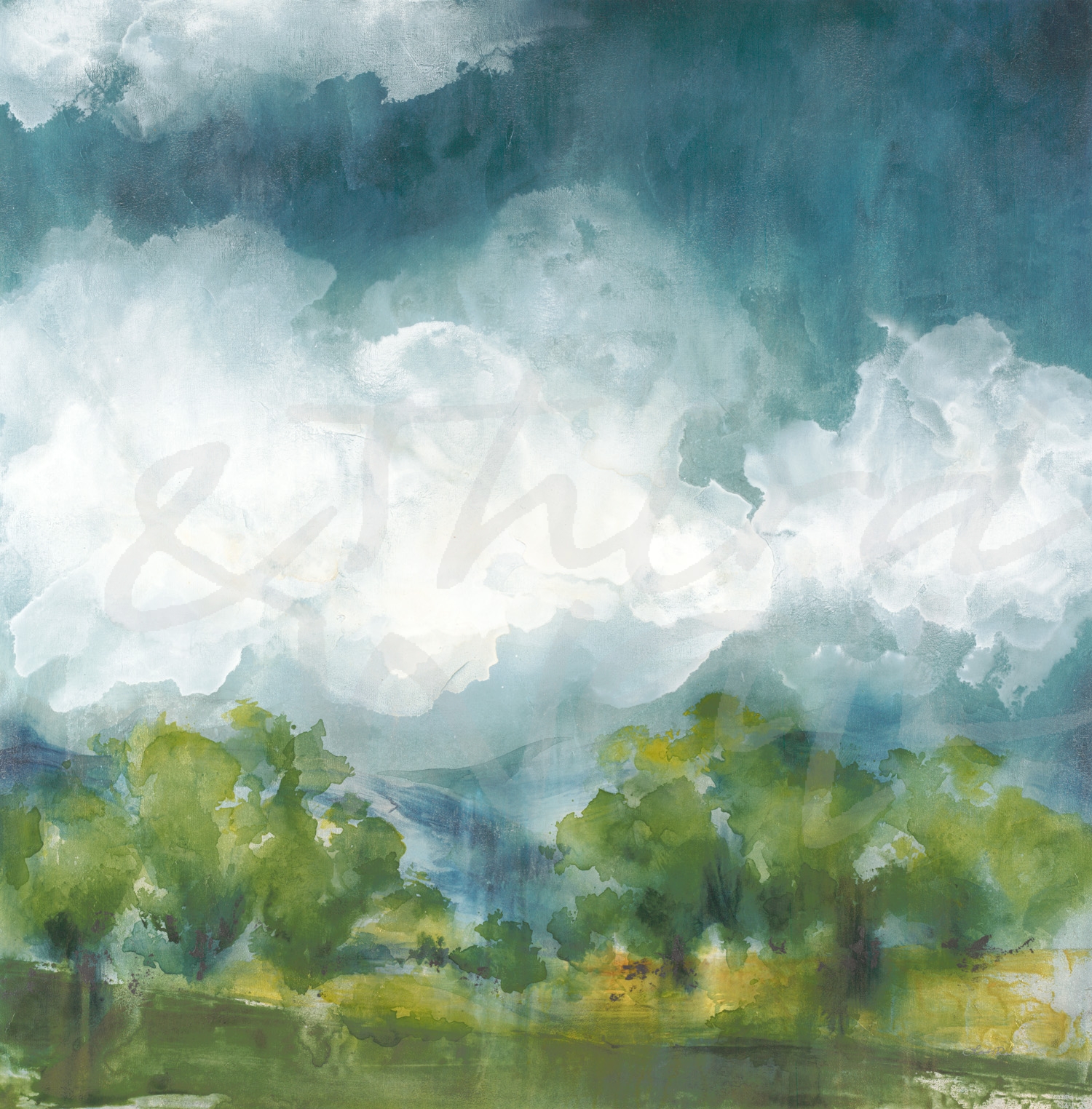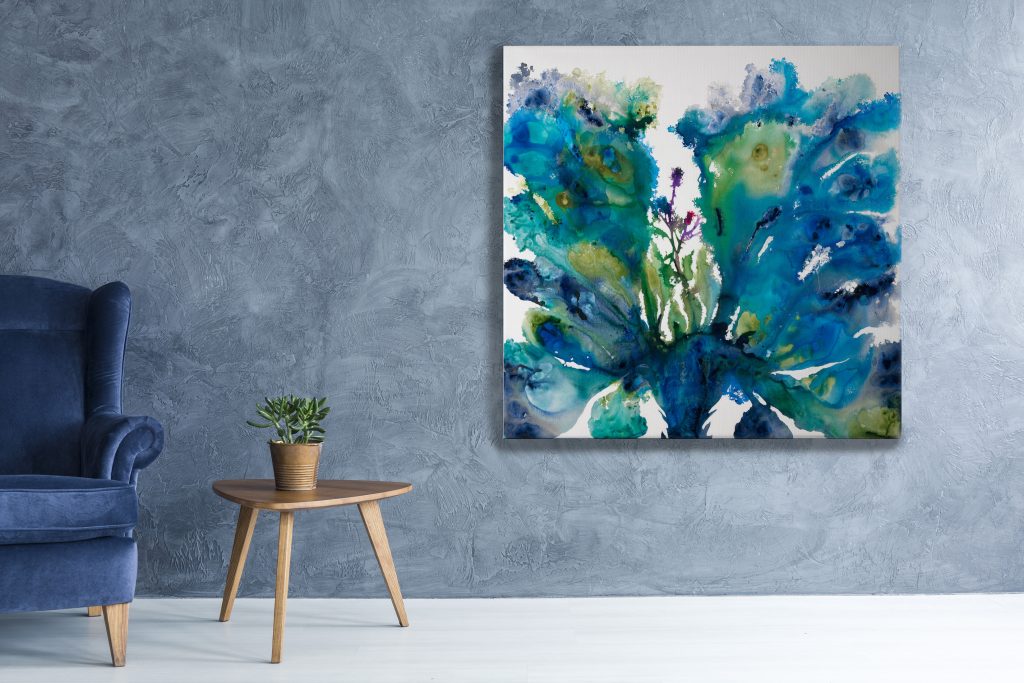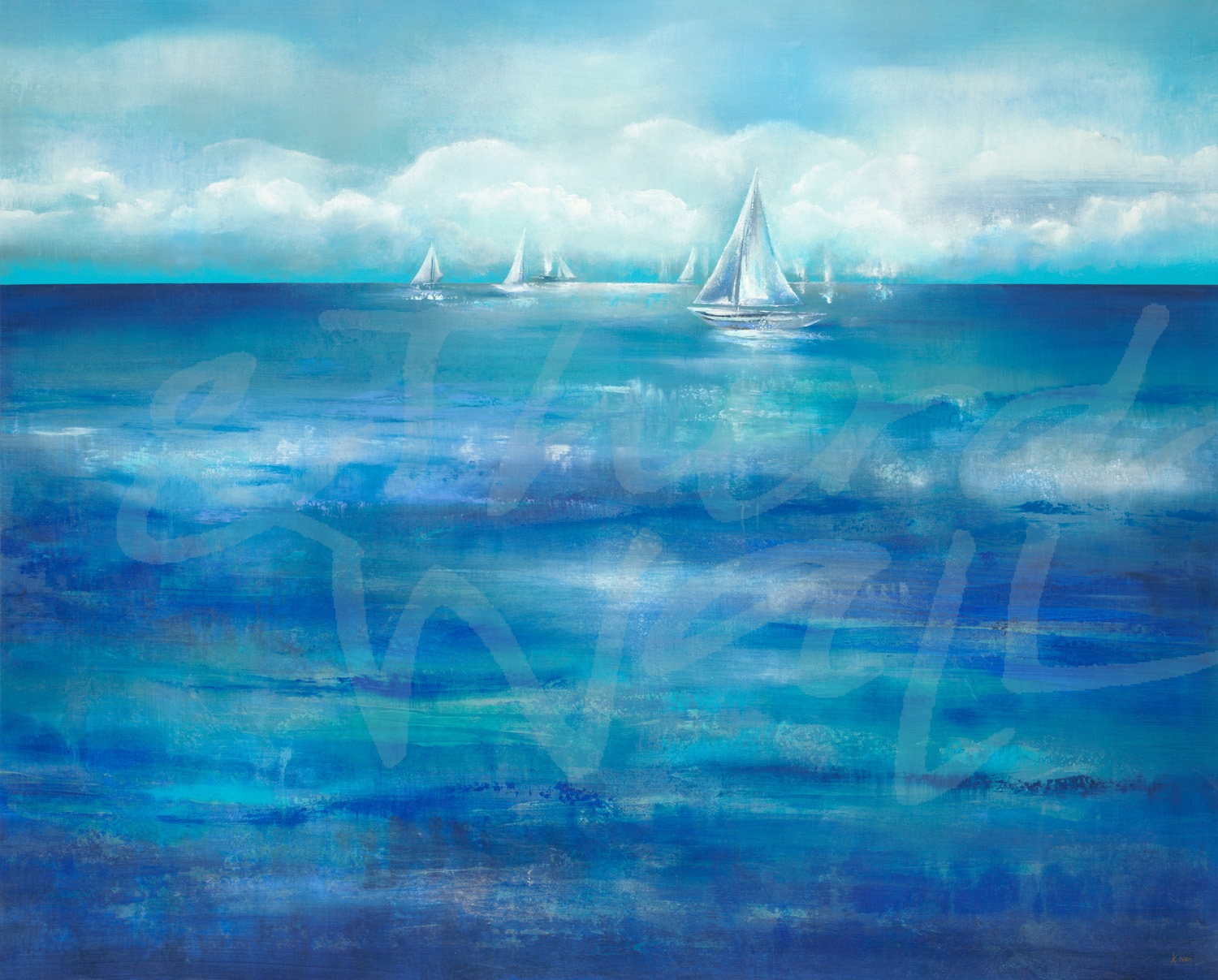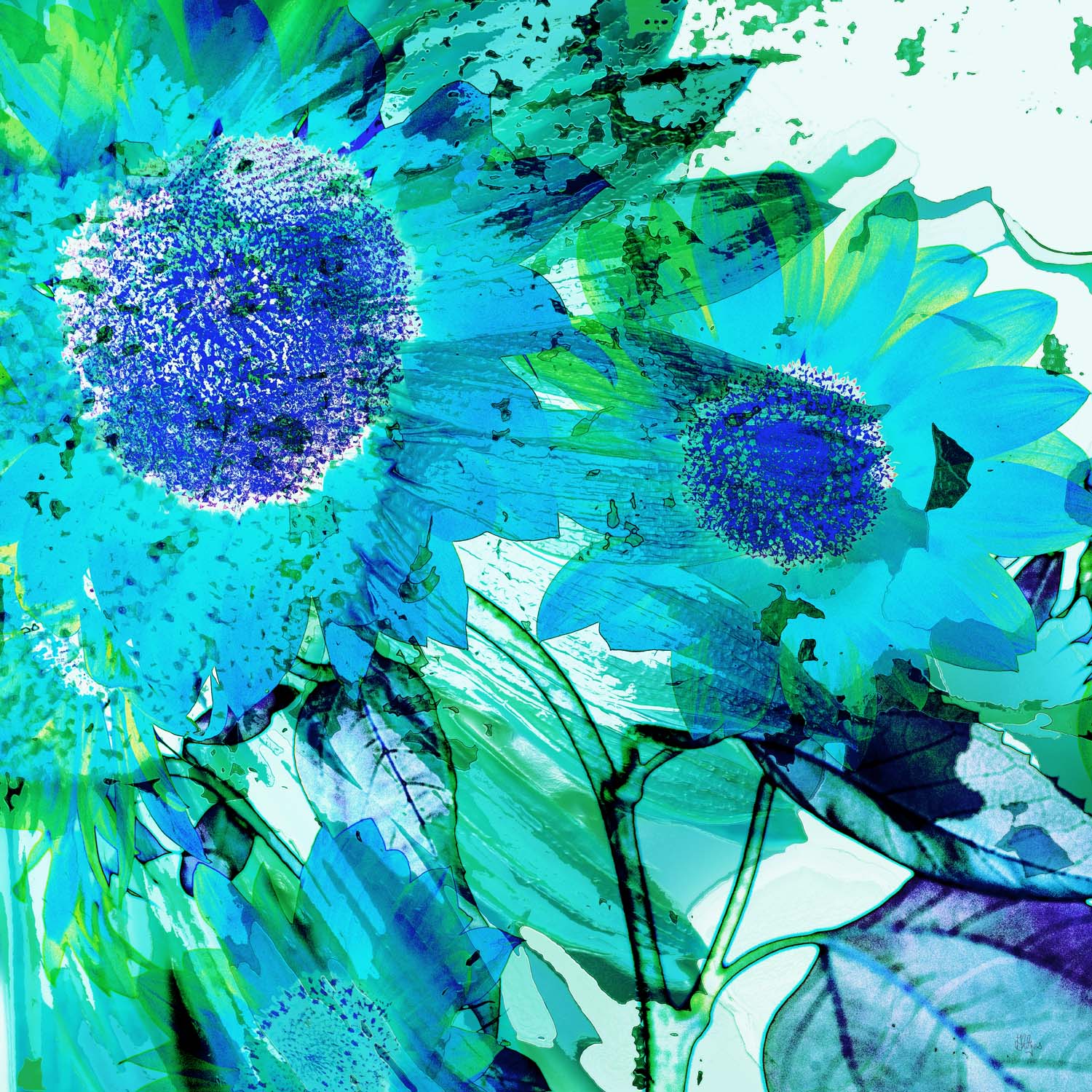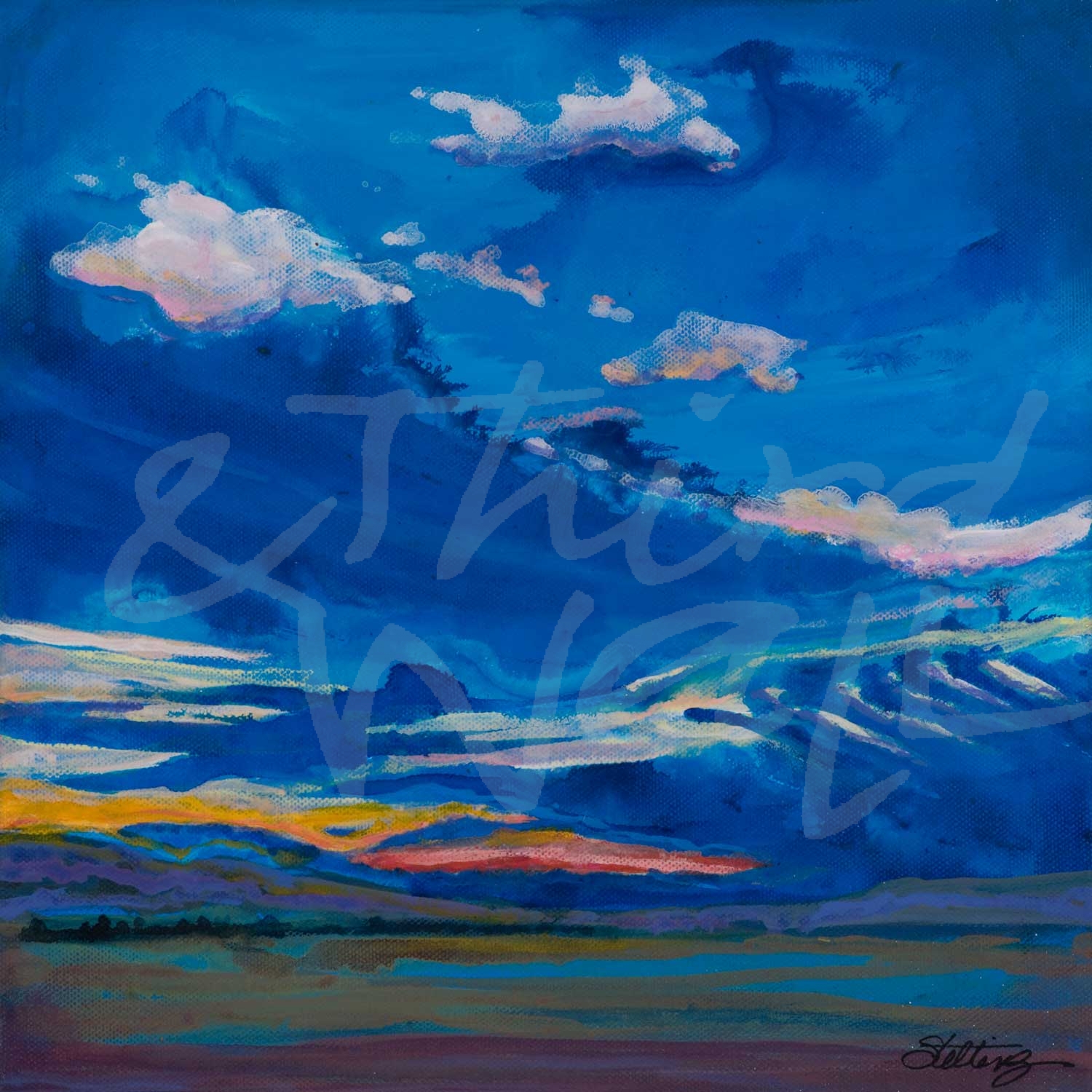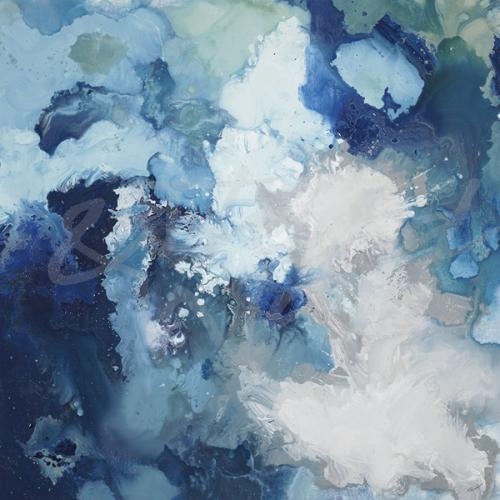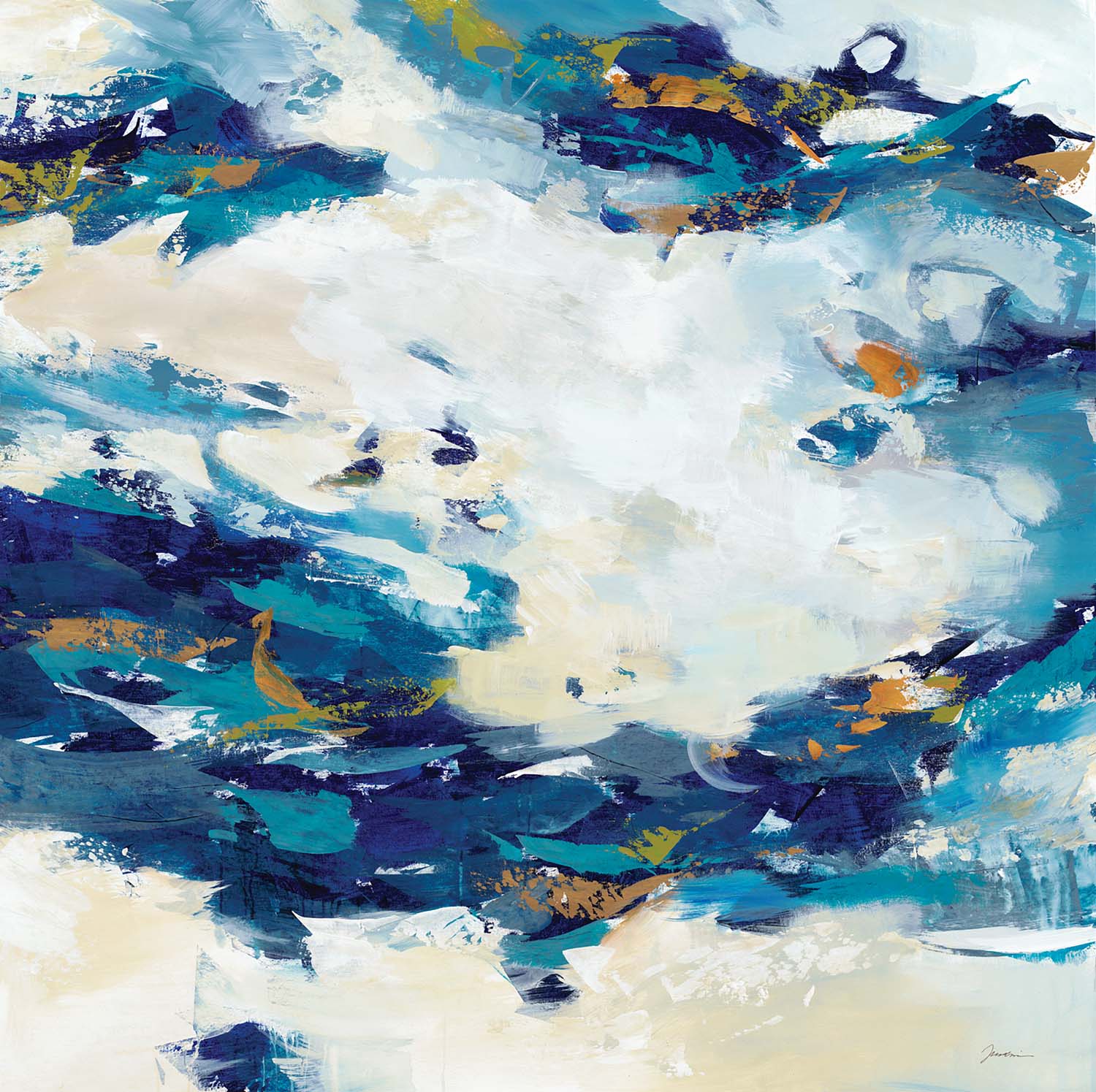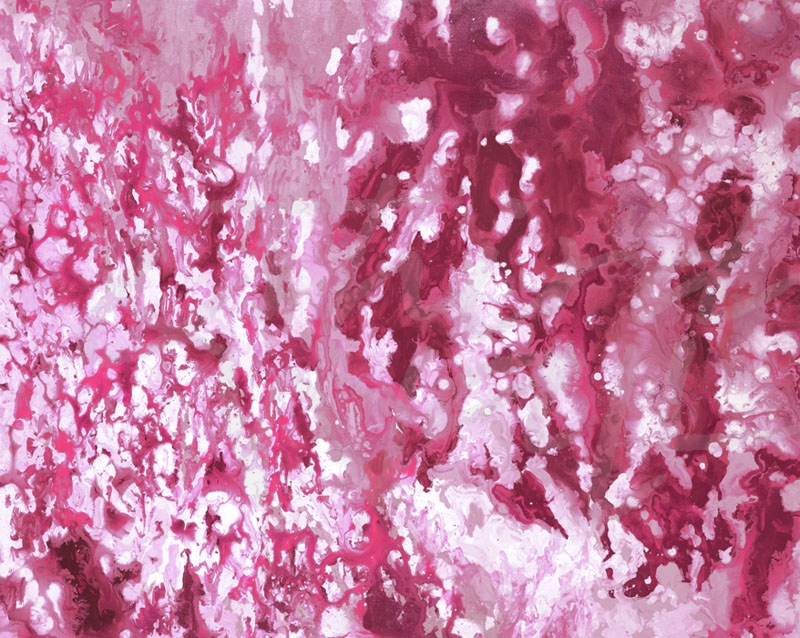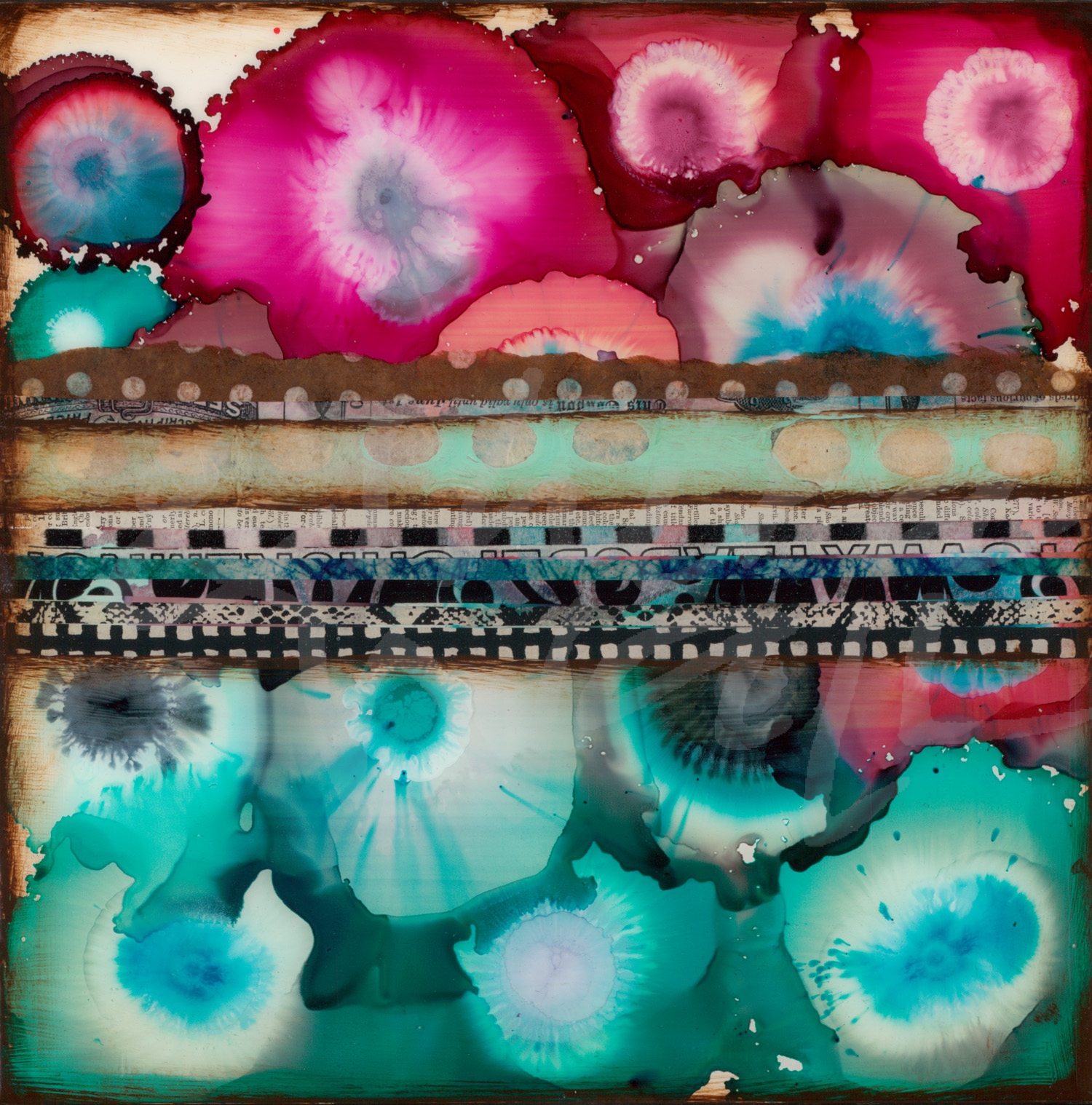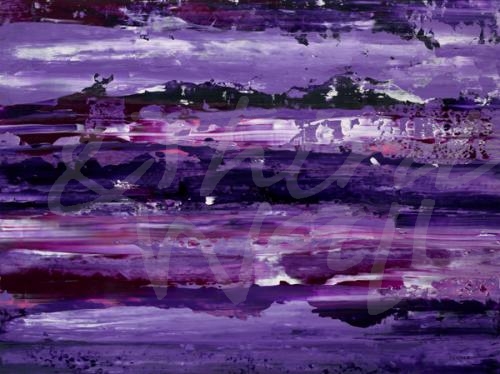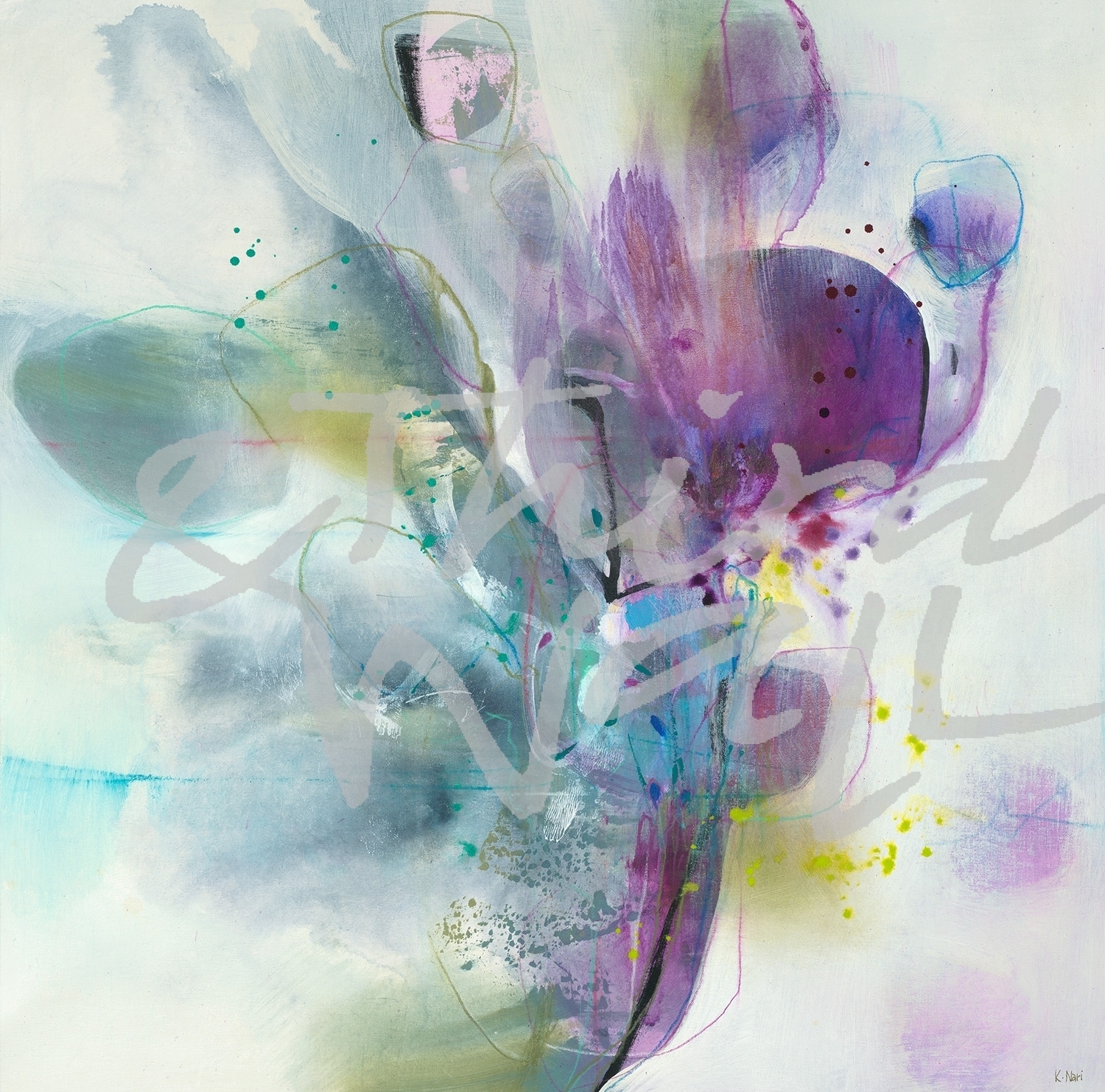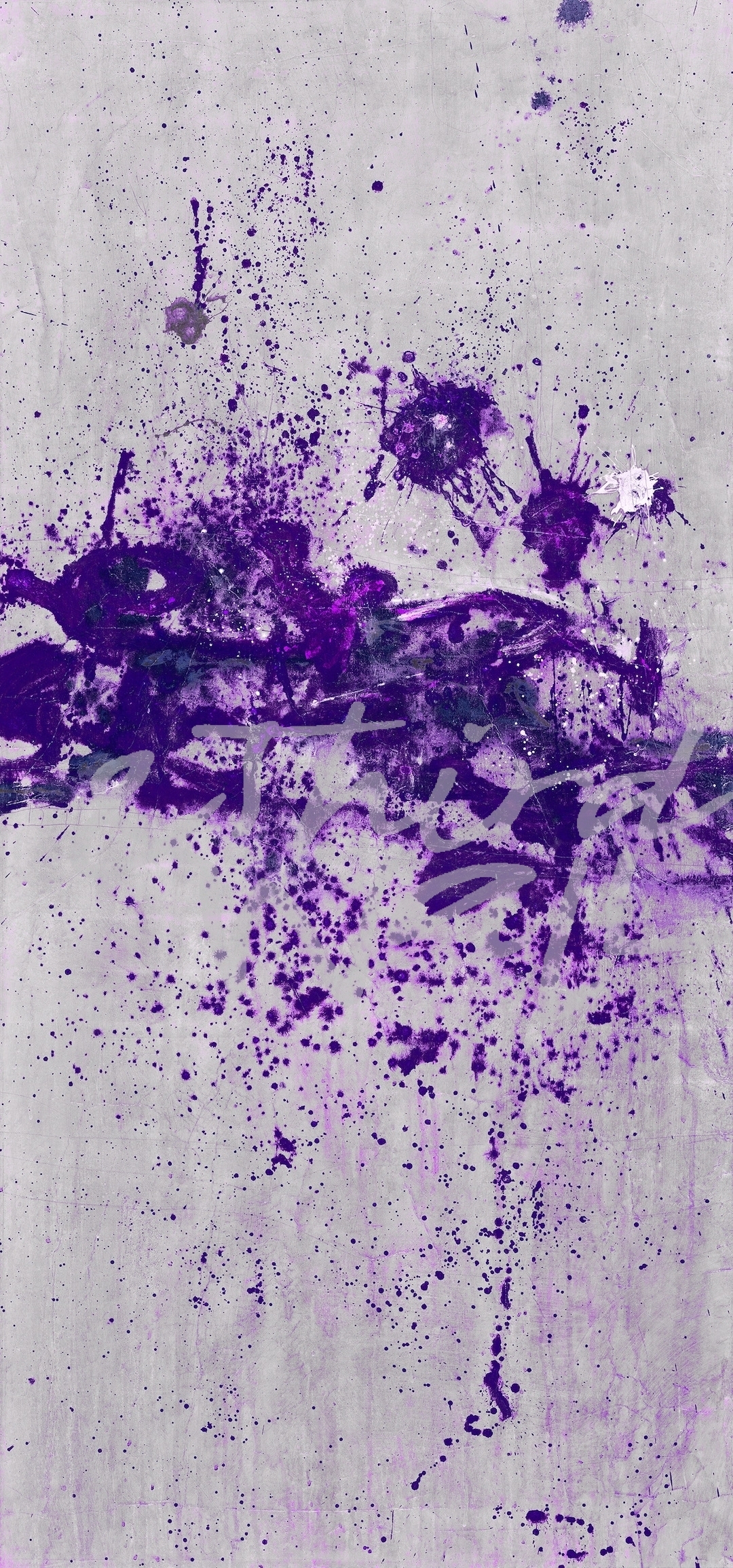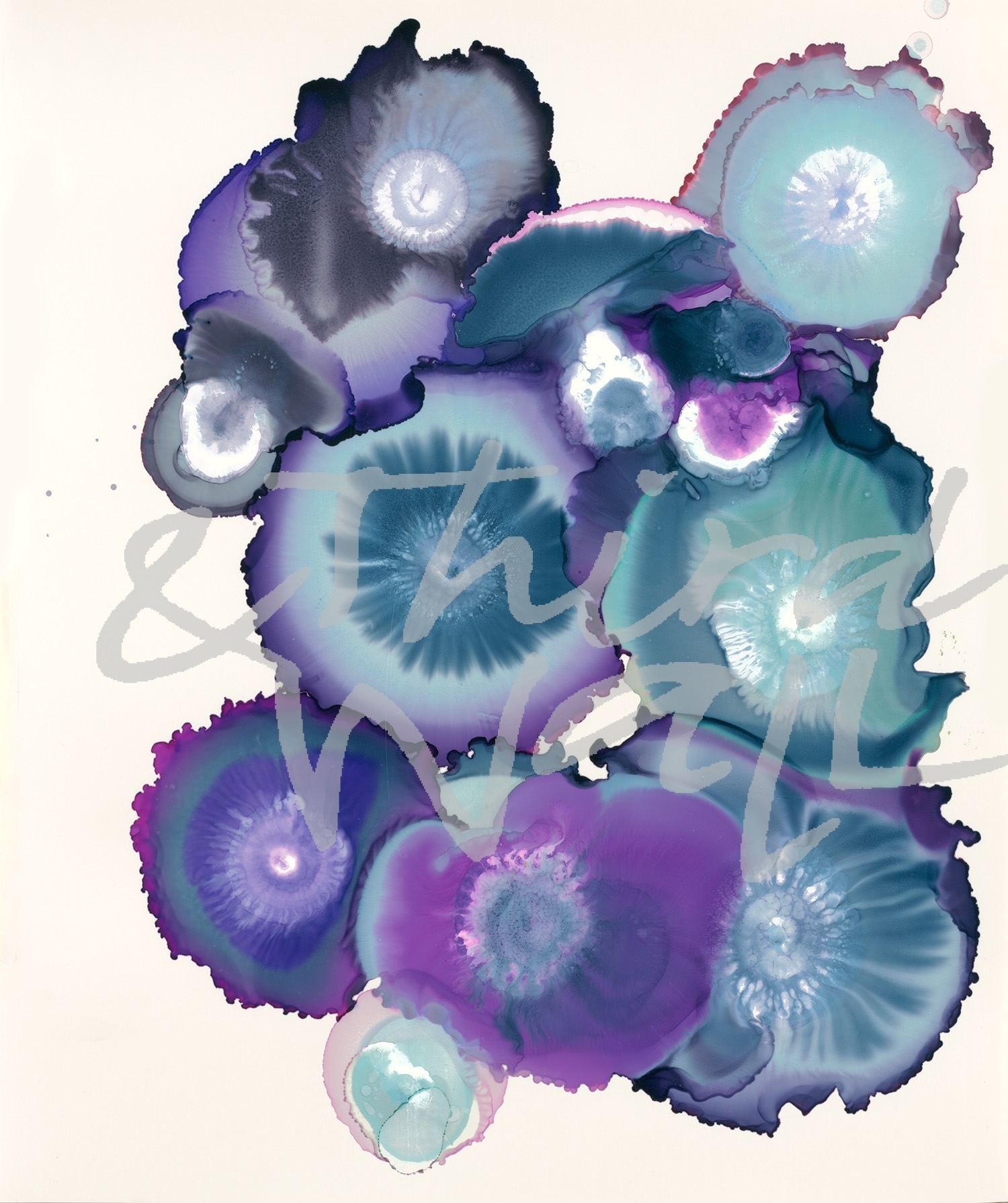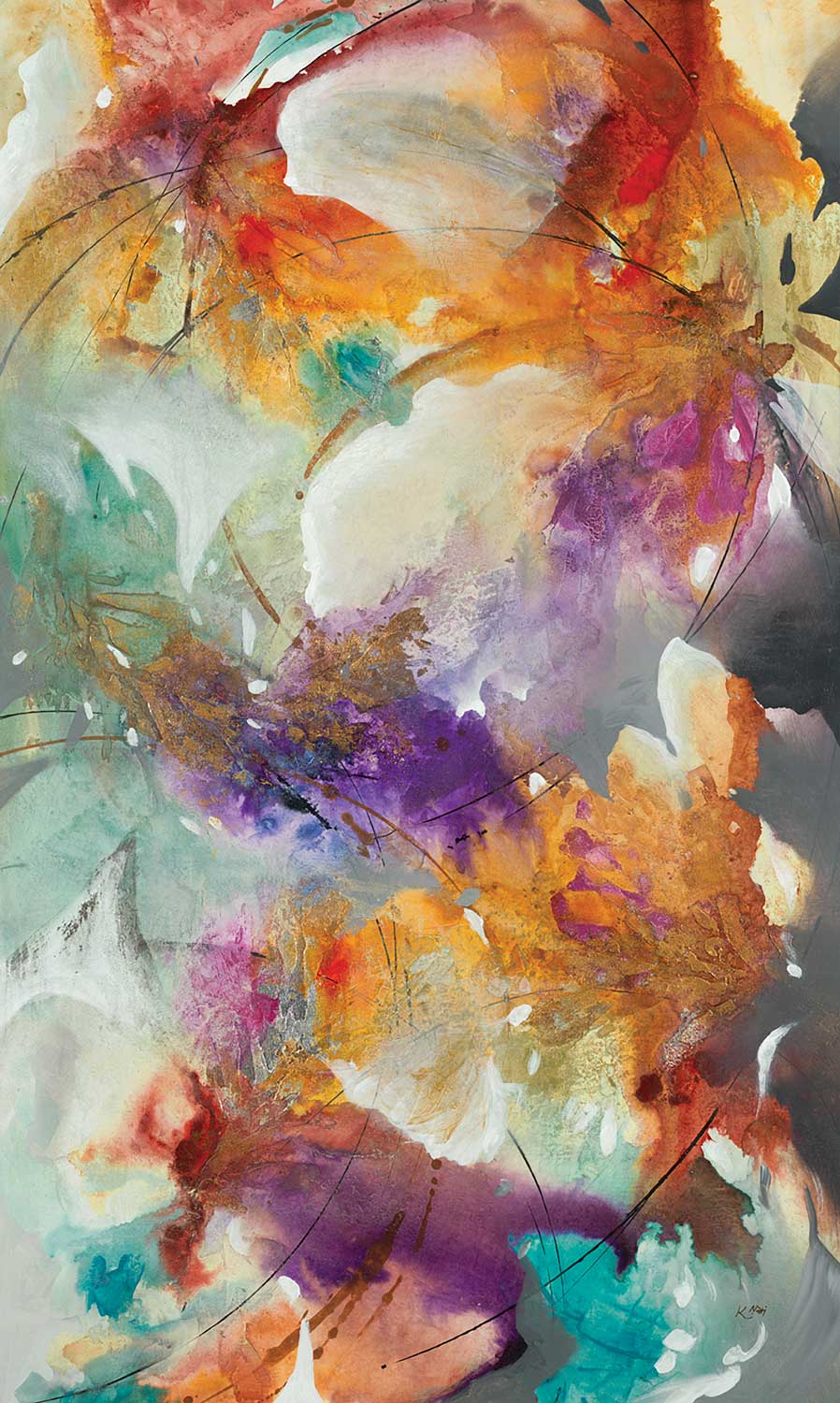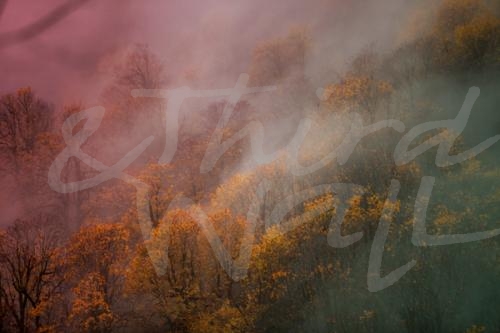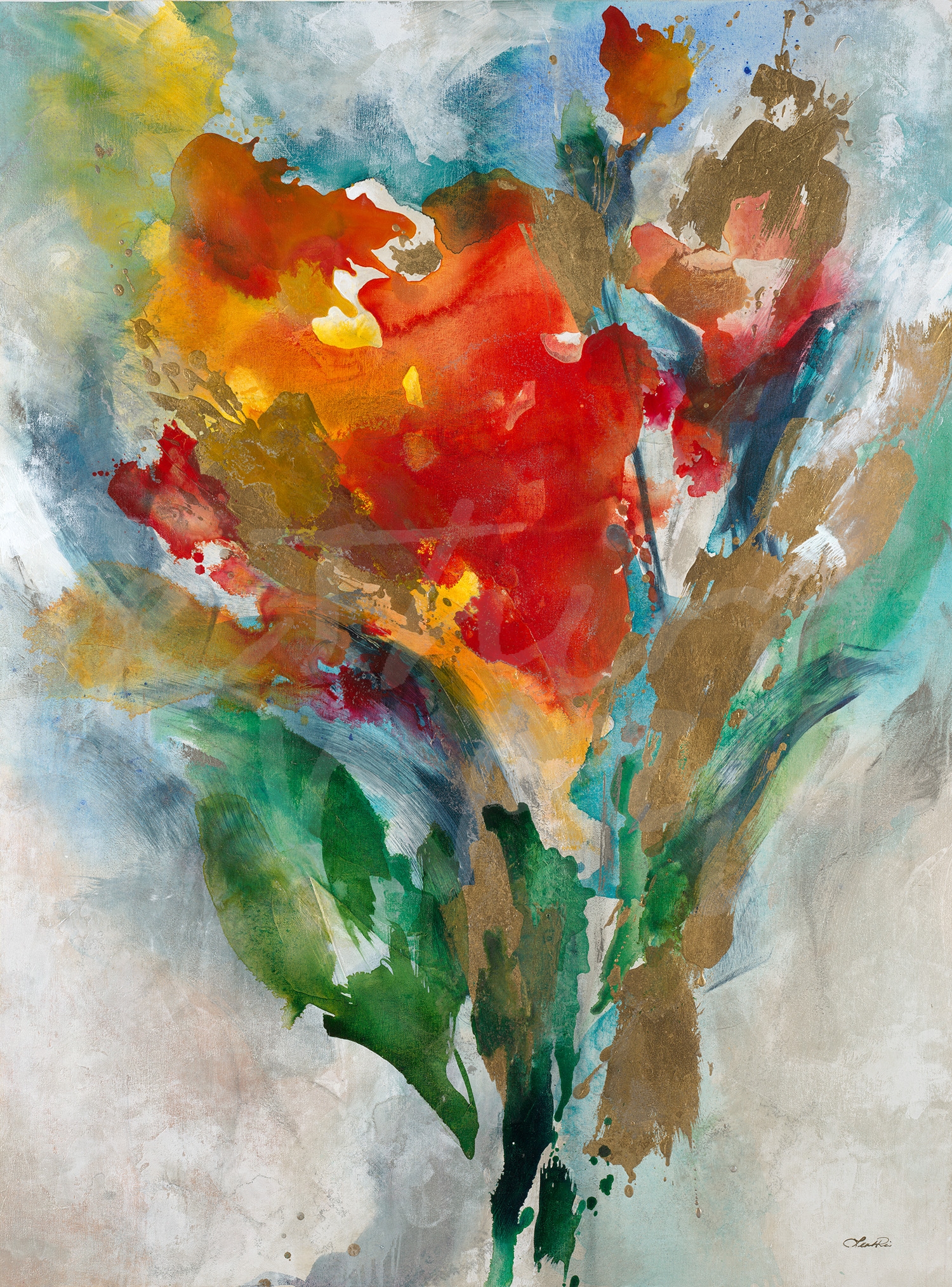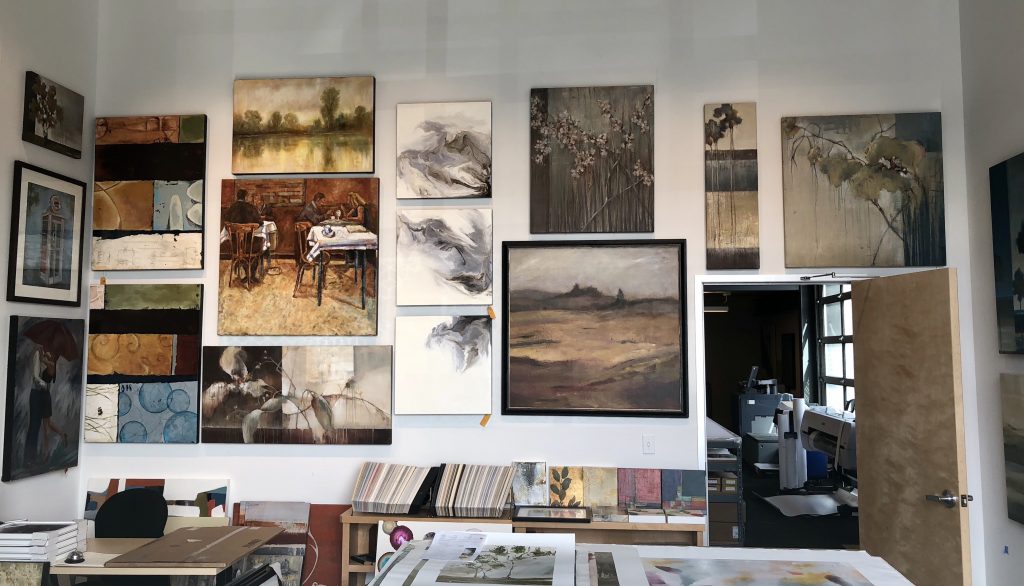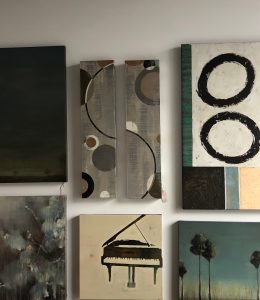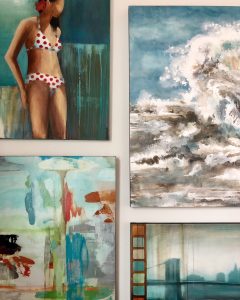Meet our artist Leah Rei! Leah has been creating from a young age which led her to study Fine Arts with an emphasis in Painting at Arizona State University. She finds a great deal of inspiration in nature, and is often drawn to creating works that honor this. When in need of a muse, Leah takes to the trails, hiking to clear her mind and refocus. Working mostly in fluid acrylics, her art is an exploration of color, light and texture with the desire to represent all that inspires her with a sophisticated and thoughtful touch.
finds a great deal of inspiration in nature, and is often drawn to creating works that honor this. When in need of a muse, Leah takes to the trails, hiking to clear her mind and refocus. Working mostly in fluid acrylics, her art is an exploration of color, light and texture with the desire to represent all that inspires her with a sophisticated and thoughtful touch.
What do you do first when you get to the studio?
Turn on the music! Nothing gets me into the “zone” faster than finding just the right station to paint to. Painting in the “zone” feels almost like a runner’s high. Everything is working in harmony: your body, your mind, the paint. The gratification of finding that place of creativity is indescribable. I hunt for the “zone” every day.
How many paintings do you work on at a time?
As many as possible! I find myself needing to have multiple pieces going so I don’t get too attached to any particular one. This is not to say that I don’t put great amounts of care into my works, but rather that when I become too attached, I lose the ability to see the piece clearly, to make changes, and, more so, to be surprised by where the piece is taking me. Creating each piece is like going on a journey, the best sights to see are the ones you didn’t know were there.
- “Spring Air”
- “Summer Sunkissed”
- “Nexus III” by Leah Rei
- “Spring Blooms”
- “Blushed Bouquet”
- “Wild Flower Bouquet”
Do you have a dream project that you would like to work on?

“Drifter”
Hmmm… tough question. I love working large. If I had a dream project, it would be something big, site specific, and where a lot of people can enjoy it. By site specific, I mean creating a piece for a specific location, wall, building, etc. It can be a lot of fun drawing inspiration from your surroundings and creating a special piece with this in mind.
If you could paint with anyone, who would it be?
Helen Frankenthaler. I am drawn to her confidence, large works, and need to express what she saw and experienced. Mrs. Frankenthaler once said about her own works, “my pictures are full of climates, abstract climates. They’re not nature per se, but a feeling.” I feel similarly about my own pieces, as they are an expression of nature not necessarily a direct depiction.
What’s your favorite way of generating ideas and inspiration?
Getting outside, fresh air, and nature. My strongest ideas come when I make room for them. A lot of times this is about slowing down and getting in a good hike.
How has your art evolved over time?
I have always had a need to create in me. I started taking art more seriously in high school before deciding to study it in college. Because art has been so prevalent in my life and education, my early works were more technical and somewhat realistic. Over the years, my work has become more and more of an expression of what I see and feel. I am grateful to have such a foundation and technical background but what good is having rules if you can’t break them.
- “Floral Notes”
- “Peaceful Views”
- “Traveler”
- “Cool Breeze”
- “Entwined” by Leah Rei
- “Seasons Come”
- “Blue Magnolia II”
- “Tipping Point” by Leah Rei
What do you like most about your work?

“Meandering”
That I get to be the one to make it. I feel incredibly lucky every day that this is my career.
What is one word that best describes your style?
I am not sure one word is enough but if I had to choose probably fluid.
Is there an idea you would like to explore?
I have been thinking a lot recently about how creating is a balancing act. There is a duality that I find fascinating. Art and creating at its best is found in the space between intention and intuition, calculated and spontaneous, vulnerable and strong, knowing and discovering.
- “Hydrangea”
- “First Blush”
- “Sterling Impressions”
- “Warm Waves” by Leah Rei
What is your favorite time of day to paint?
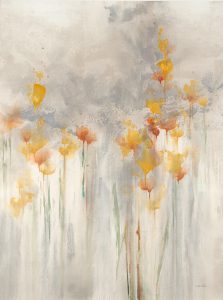
“Whistful”
Early in the morning or late afternoon/evening. The light is amazing.
Do you ever get “stuck” on a piece? If so, what do you do?
Absolutely! Sometimes I just have to put that piece away and get some distance. Looking at it, studying it, hemming and hawing does not get me any closer to completing a piece. Pieces that I am stuck on go in a different room, out of sight, out of mind. I then get to find them later and be surprised by what they have to offer.
What is next up on your easel?
Lots and lots! I have been thinking about a series of landscapes that work with the idea of duality, made up of marks both spontaneous and intentional. Additionally, some more abstract pieces that are light, bright, and airy.
- “Amarantine”
- “Lilacs”
- “Content”
- “Distant Light”
The images featured here are available in our Print-On-Demand collection. Some areas of our website are password-protected. If you are a member of the trade but don’t have full access to our website, www.thirdandwall.com, please contact us at customerservice@thirdandwall.com.
